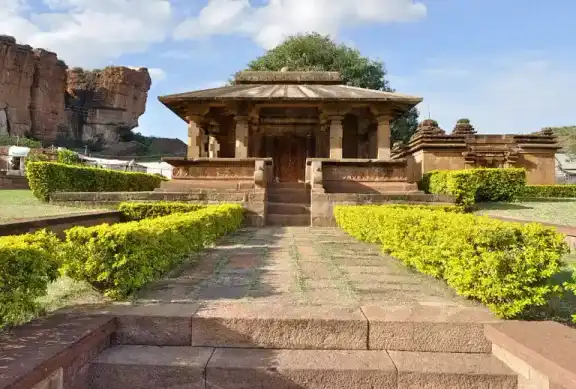Comprehensive Guide to Kasaragod District
Introduction
Kasaragod, located in the northernmost part of Kerala, India, is a district of remarkable diversity and beauty. Known for its cultural richness, historical significance, and stunning natural landscapes, Kasaragod offers a unique blend of experiences that captivate both residents and visitors.
Demography
Kasaragod is a melting pot of cultures, languages, and religions. The population is a mosaic of communities including Malayalis, Tuluvas, Kannadigas, and Beary Muslims. This district is known for its communal harmony, with Hindus, Muslims, and Christians living together peacefully. According to the latest census, Kasaragod has a population of approximately 1.3 million people, with a literacy rate of around 90%, reflecting the emphasis on education in the region.
Culture
Festivals and Traditions
Kasaragod's cultural vibrancy is evident in its festivals and traditions. Major festivals celebrated here include Onam, Vishu, Eid, and Christmas. The Theyyam performance, a ritualistic art form, is particularly significant, with its vibrant costumes and dramatic enactments drawing large crowds. The district is also known for Yakshagana, a traditional theatre form that blends dance, music, and dialogue, performed mainly in the Kannada language.
Arts and Crafts
The rich artistic heritage of Kasaragod is showcased through its crafts, such as the intricate handloom weaving found in the villages of Kanhangad and the bell metal crafts of Cheruvathur. These traditional crafts reflect the skills and creativity of the local artisans and continue to thrive as part of the district's cultural identity.
Geography and Topography
Kasaragod is characterized by a diverse topography that includes coastal plains, hills, and forests. The district is bordered by the Arabian Sea to the west and the Western Ghats to the east, providing a range of natural habitats and scenic landscapes.
Rivers and Beaches
The district is blessed with numerous rivers, such as the Chandragiri and the Kariangode, which support agriculture and provide picturesque views. Kasaragod's coastline features several beautiful beaches, including Bekal Beach, known for its iconic Bekal Fort, and the tranquil Kappil Beach.
Forests and Wildlife
The eastern part of Kasaragod is covered by the dense forests of the Western Ghats, which are home to a rich biodiversity of flora and fauna. Wildlife enthusiasts can explore the Ranipuram Wildlife Sanctuary, which shelters various species of birds, mammals, and reptiles.
Cuisines
Kasaragod's cuisine reflects its cultural diversity and coastal geography. Rice and fish are staples, often accompanied by coconut-based curries and a variety of side dishes.
Popular Dishes
- Nei Pathiri: A traditional rice bread often served with spicy chicken curry.
- Appam and Stew: Fermented rice pancakes served with a coconut milk-based vegetable or meat stew.
- Kallummakkaya (Mussels) Curry: A coastal delicacy cooked with a blend of spices and coconut.
Beverages
Local beverages include toddy, a fermented palm drink, and various herbal teas that are part of the Ayurvedic traditions in the region.
History
Kasaragod's history is a tapestry of various influences, including the rule of ancient kingdoms, colonial powers, and local chieftains.
Ancient and Medieval Periods
Historically, Kasaragod was part of the ancient Tamilakam and later came under the rule of the Alupa and Kolathiri dynasties. The region's strategic location along the Malabar Coast made it a hub for maritime trade and cultural exchanges.
Colonial Era
The arrival of the Portuguese, Dutch, and British colonial powers significantly impacted Kasaragod. Bekal Fort, built by Shivappa Nayaka of the Keladi dynasty, is a prominent historical monument from this period. The fort was later occupied by the British, who used it as a military station.
Poets and Authors
Kasaragod has been the birthplace of several renowned poets and authors who have contributed to Malayalam and Tulu literature.
B. Madhava Kurup
A notable poet from Kasaragod, B. Madhava Kurup, is known for his evocative poetry that captures the essence of the region's landscapes and cultural ethos.
K. P. Raghavan
An acclaimed writer, K. P. Raghavan has penned numerous works in Malayalam, highlighting the social issues and cultural narratives of Kasaragod.
Administration
Kasaragod is administratively divided into two taluks: Kasaragod and Hosdurg. The district is governed by the Kasaragod District Panchayat, which oversees various developmental activities and public services.
Administrative Structure
- District Collector: The chief administrative officer responsible for the overall governance of the district.
- Panchayats: Local self-government institutions that manage the administrative functions at the village level.
- Municipalities: Urban administrative bodies that govern the towns and cities within the district.
Development Initiatives
The district administration has implemented several initiatives to improve infrastructure, healthcare, and education. Projects like the Kasaragod District Development Plan aim to enhance the quality of life for residents through sustainable development practices.
Conclusion
Kasaragod is a district of immense cultural heritage, natural beauty, and historical significance. Its diverse demography, rich traditions, and scenic landscapes make it a unique destination in Kerala. As Kasaragod continues to develop and modernize, it retains its cultural roots and historical legacy, offering a harmonious blend of the past and the present.
Suggested Diagram
This diagram provides a structured overview of the key aspects of Kasaragod District, highlighting its demographic composition, cultural richness, geographical diversity, culinary delights, historical background, literary contributions, and administrative framework.
